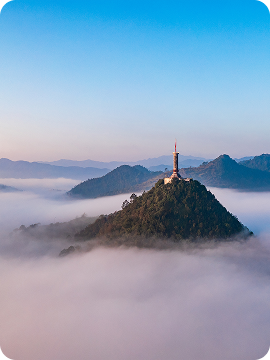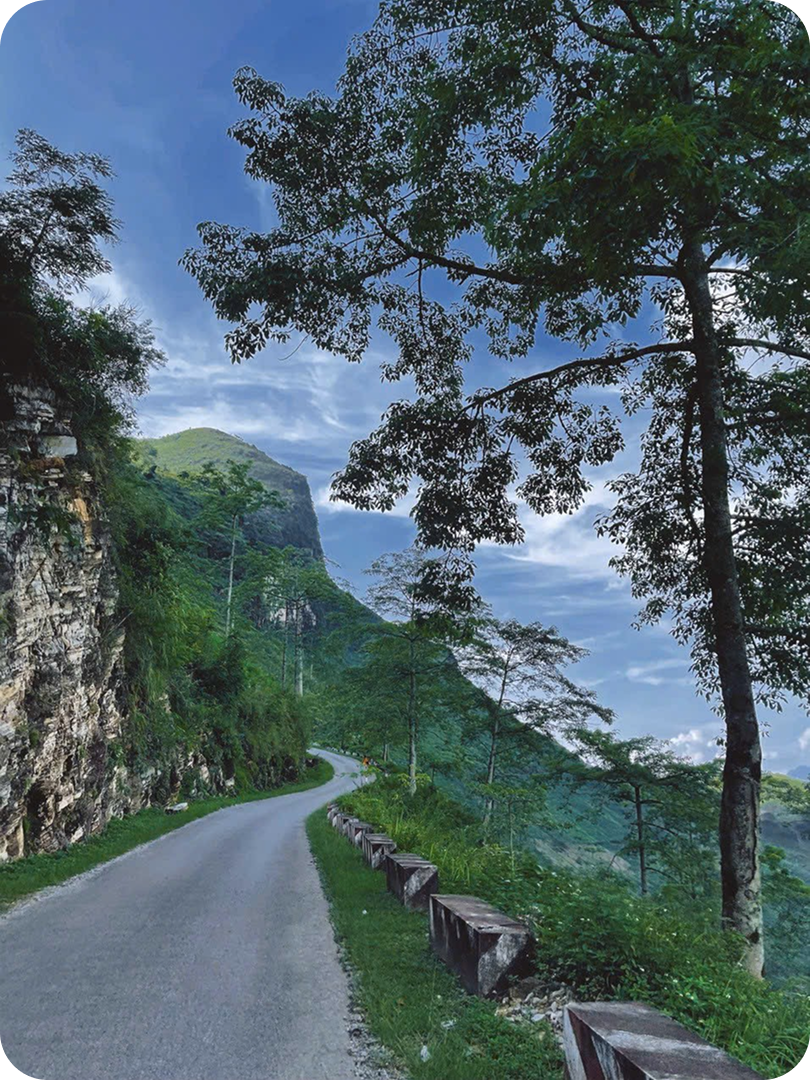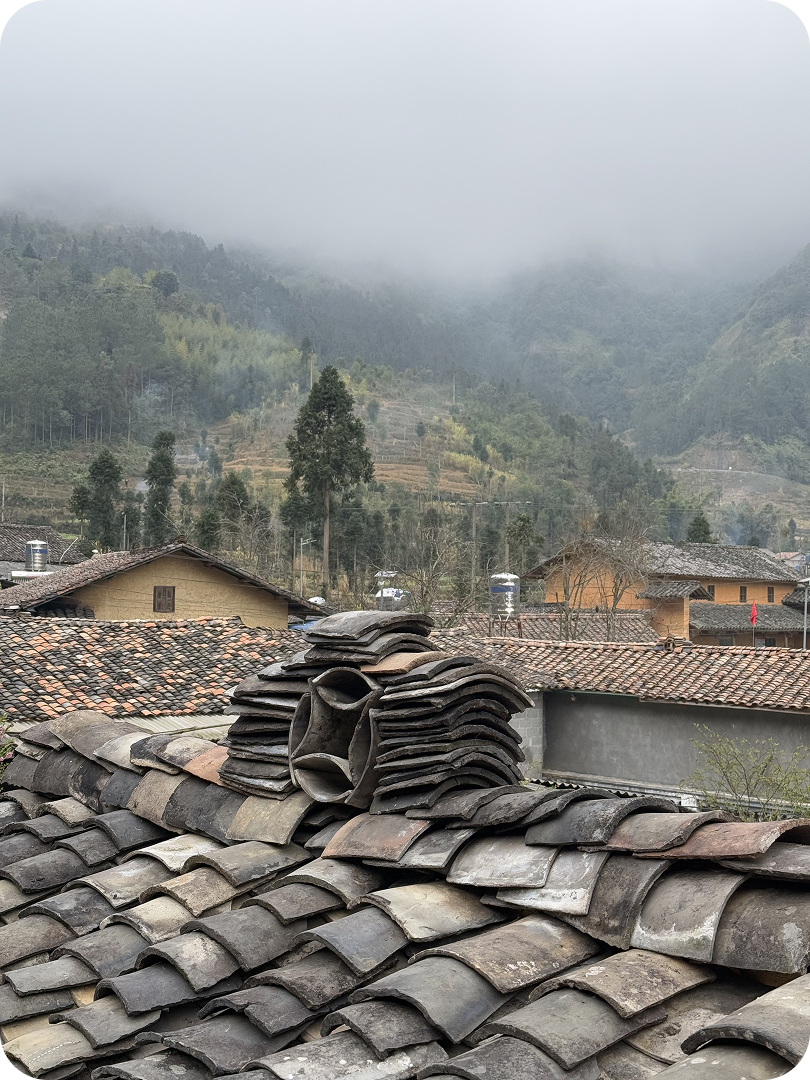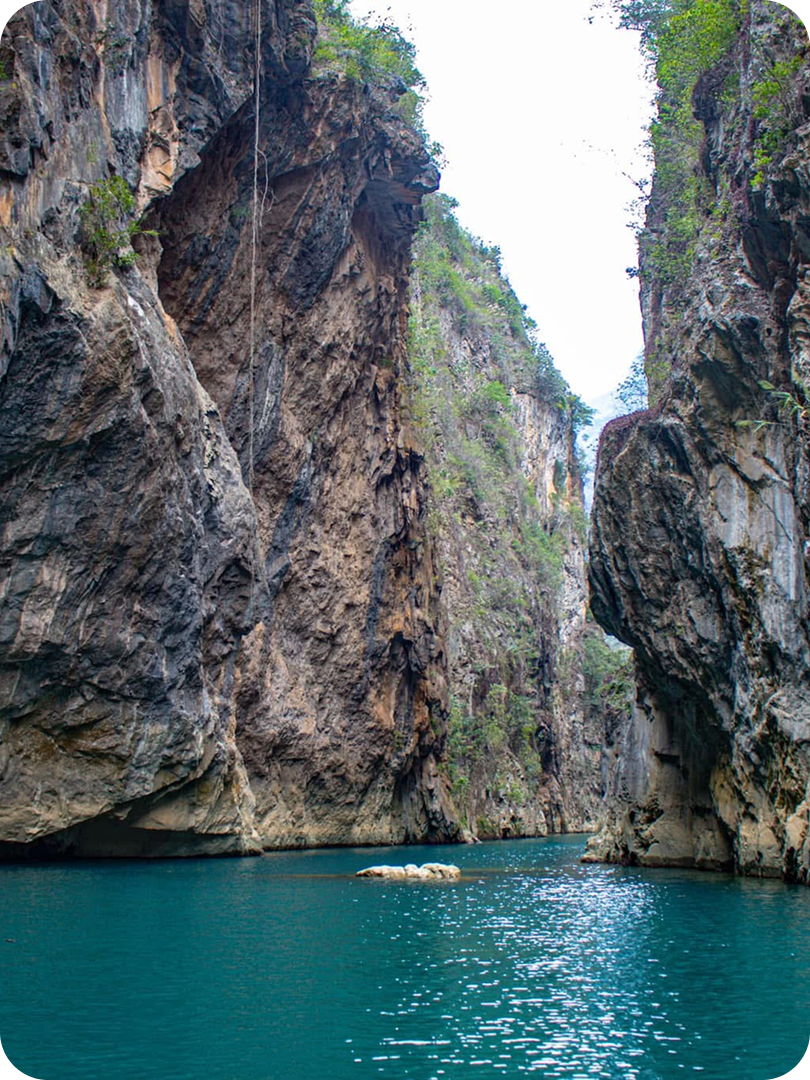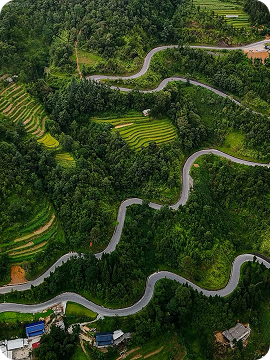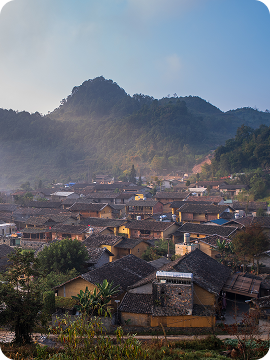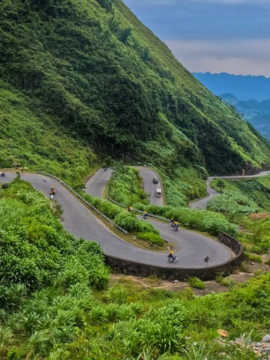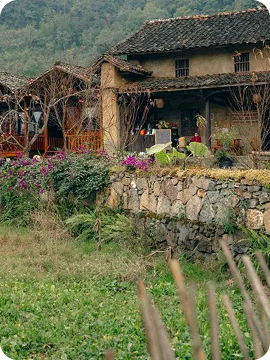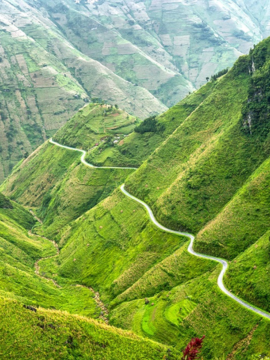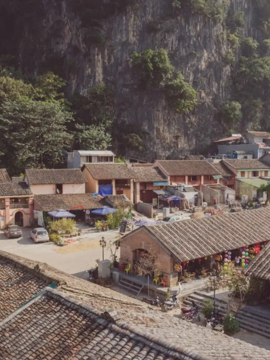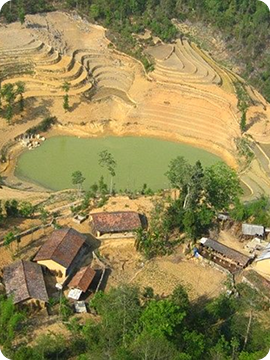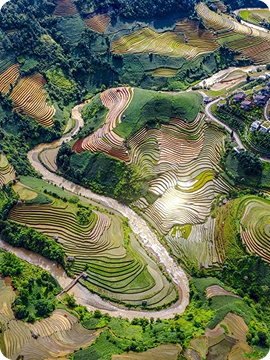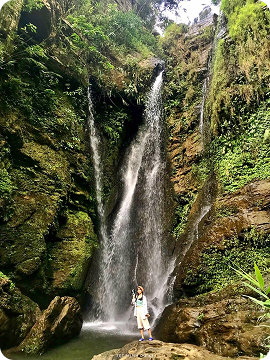 DRAGON EYE (LUNG CU)
DRAGON EYE (LUNG CU)
Two legendary lakes at the flagpole’s foot.
Dragon Mountain-Dragon Eye stand as symbolic sentinels at Vietnam’s northernmost frontier. With layers of ancient myth, dramatic terrain and cultural depth, they offer more than just a scenic stop. They invite travelers into the soul of Ha Giang. In this guide, Phieu Travel helps you uncover the legend behind the mountain, how to get there, the best time to visit and essential tips for a meaningful and well-prepared journey through this highland wonder.
1. Dragon Mountain-Dragon Eye: Where the Dragon guards Vietnam’s northernmost point
Dragon Mountain (Long Son) stands at 1,470 meters (4,823 feet) in Lung Cu Commune, Ha Giang Province. Its summit hosts the Lung Cu Flagpole, marking the northernmost point of Vietnam. The climb reveals a rugged karst landscape with steep limestone cliffs and panoramic views across the Dong Van Plateau – a UNESCO Global Geopark.
At the base of the mountain are two emerald lakes known as the Dragon Eyes. Legend says a guardian dragon left them behind. Today, these lakes provide clean water for more than 180 households in Lo Lo Chai Village and Then Ta Hamlet. Viewed from above, they resemble mirrored jewels in stone, blending myth with vital function in Ha Giang’s frontier.
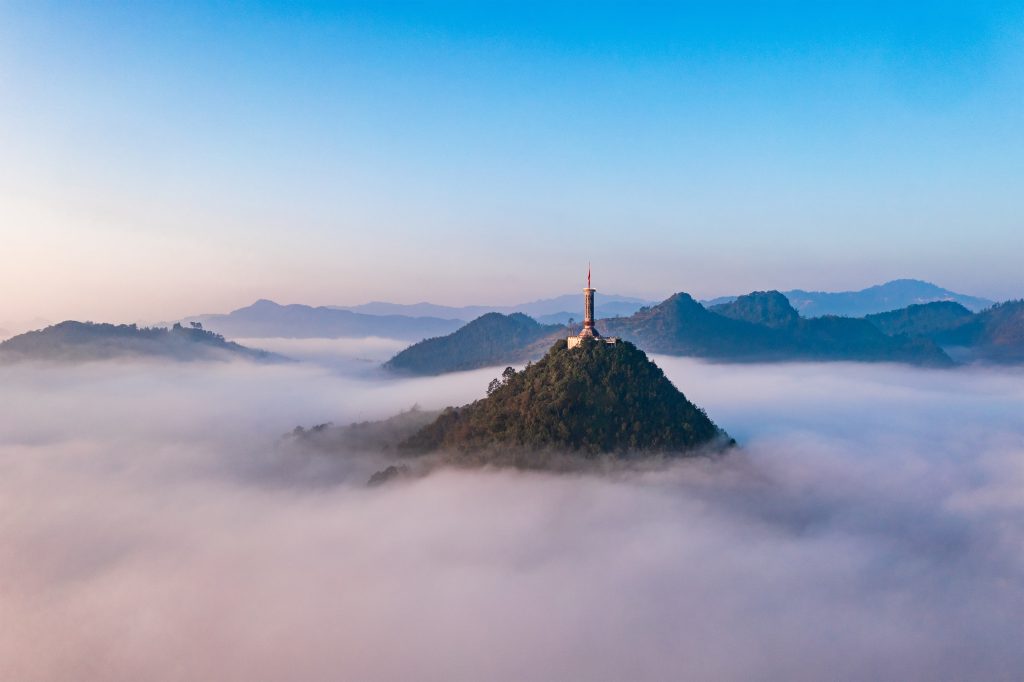
The Ultimate Ha Giang Loop Guide (2025): Itinerary, Map & Tips
2. The enigmatic legend behind Dragon Mountain-Dragon Eye
Local legend tells of a celestial dragon that once descended from the heavens and rested on the highest peak of Lung Cu, enchanted by the dramatic karst landscape yet moved by the local people’s suffering during a time of drought. According to the story, the dragon wept with compassion, and from its eyes sprang two crystal-clear streams that became the lakes known today as the Dragon Eyes.
Before returning to the heavens, the dragon left behind these waters as a lasting blessing. Locals believe the lakes never run dry, serving as both a mythic legacy and a vital water source for nearby villages. Today, the Dragon Eyes symbolize not just survival, but the deep spiritual bond between nature, folklore and life in Ha Giang’s northernmost reaches.
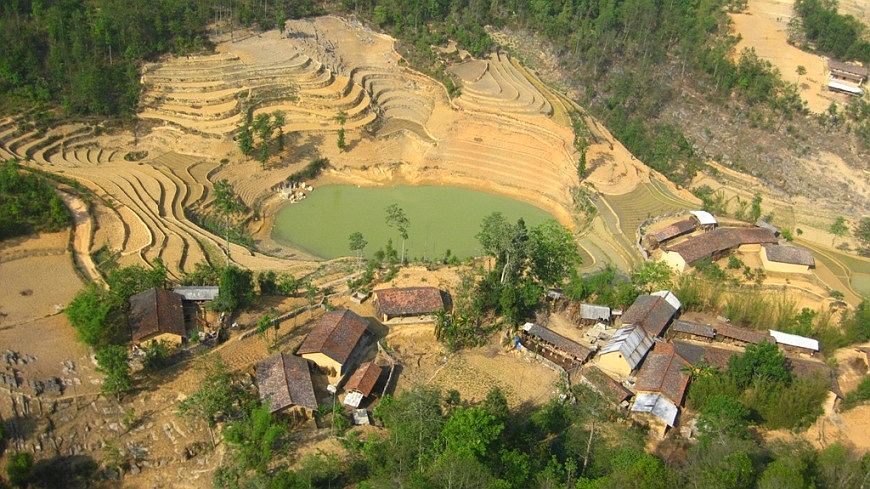
3. How to reach Dragon Mountain-Dragon Eye
From Ha Giang City, follow Highway 4C for around 150 km (93 miles) toward Dong Van. This winding mountain route, often likened to a dragon’s back, takes you through sky-high passes and scenic valleys. At Sa Phin, turn left at the junction to reach Lung Cu and Dragon Mountain. At the foot of the mountain, the Dragon Eyes twin lakes lie nearby.
For travelers coming from central or southern Vietnam, the most efficient option is to fly into Hanoi. From Noi Bai International Airport, take a sleeper bus or limousine to Ha Giang City (around 6–7 hours). Once in Ha Giang, continue along the same scenic loop toward Lung Cu to explore Dragon Mountain and its twin lakes.
4. The best time to visit Dragon Mountain-Dragon Eye
The best time to visit Dragon Mountain-Dragon Eye is from late September to early November. This is when the skies are clear, the weather is dry and cool, and Ha Giang is painted with buckwheat flowers in full bloom. It offers the most iconic and photogenic landscape.
Each season offers a unique experience:
- January – March: Spring flowers bloom across the highlands. It is also the season for traditional ethnic festivals.
- March – May: Clear weather and mild temperatures make this a great time for hiking and panoramic photography.
- June – August: Lush green scenery dominates. Though rain is more frequent, it is often brief and refreshing.
- September – November: This is the peak travel season, with crisp air, golden light, and blooming buckwheat fields. It is the highlight of autumn.
- December – February: Quiet and peaceful, with misty mountain views and cool air. Ideal for travelers seeking calm and solitude.
5. Must-see attractions near Dragon Mountain-Dragon Eye
While Dragon Mountain-Dragon Eye are the centerpiece of Lung Cu, the surrounding region offers equally compelling stops. Let’s explore the highlights you shouldn’t miss:
5.1 Lung Cu Flagpole – Vietnam’s northernmost landmark atop Dragon Mountain
Climb 839 stone steps to the summit of Dragon Mountain, where the Lung Cu Flagpole stands at over 1,400 meters (4,593 feet) above sea level. From here, you can overlook the twin lakes known as the Dragon Eyes and take in the breathtaking vistas of the Dong Van Karst Plateau.
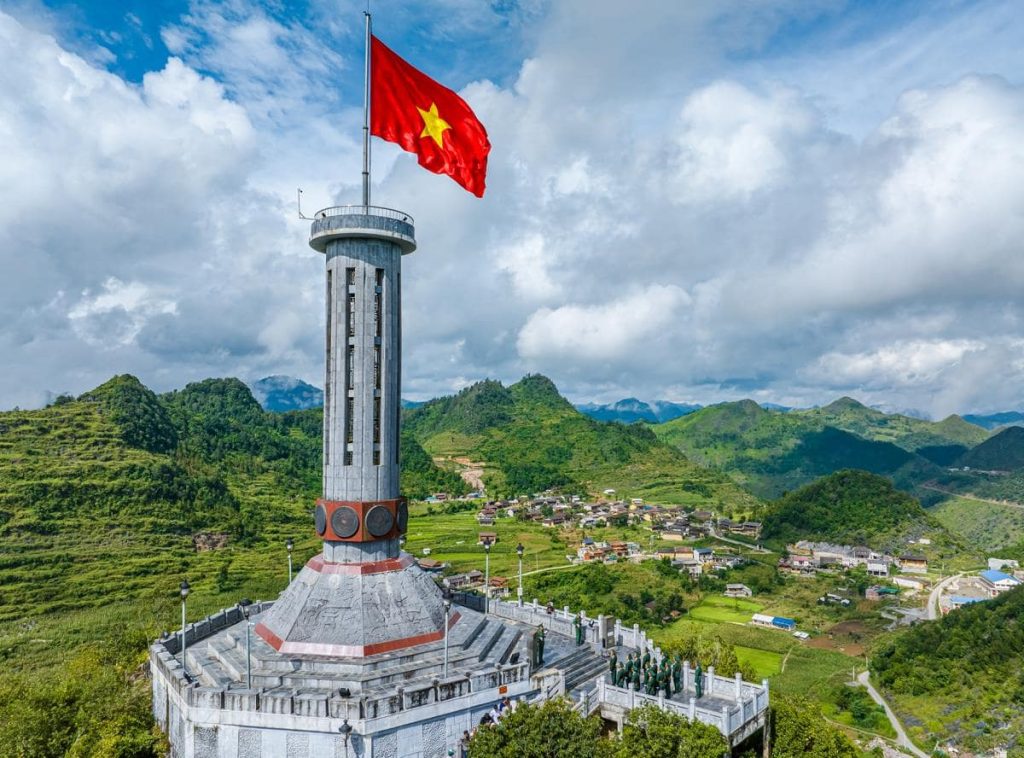
5.2 Nho Que River – An emerald silk ribbon through the karst plateau
Just a short journey from Dragon Mountain, the Nho Que River winds gracefully through the Dong Van Karst Plateau. Originating in Yunnan, China, it flows into northern Vietnam as a natural border between Lung Cu and Ma Lé. Beneath the cliffs of Ma Pi Leng Pass, its emerald waters and towering canyon walls create one of Ha Giang’s most breathtaking and iconic sights.
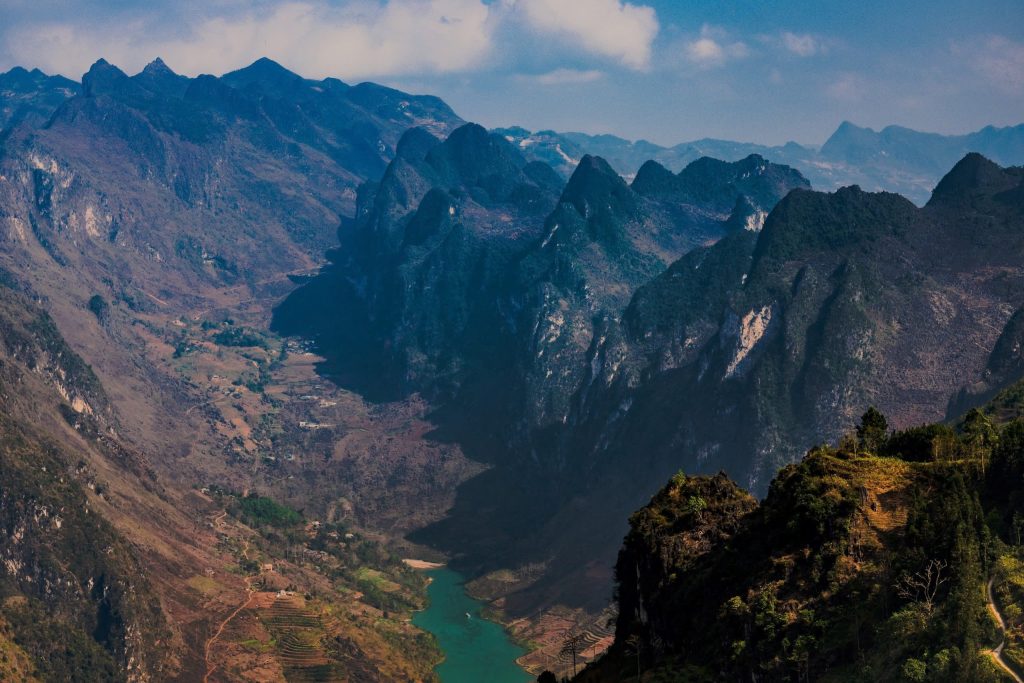
5.3 Lo Lo Chai Village – A poetic beauty you shouldn’t miss
Just beneath Dragon Mountain lies Lo Lo Chai Village – home to the Lo Lo ethnic group. Its golden rammed-earth houses and black-tiled roofs create a striking contrast with the surrounding limestone peaks. From here, you can see the Lung Cu Flagpole rising above the ridge.
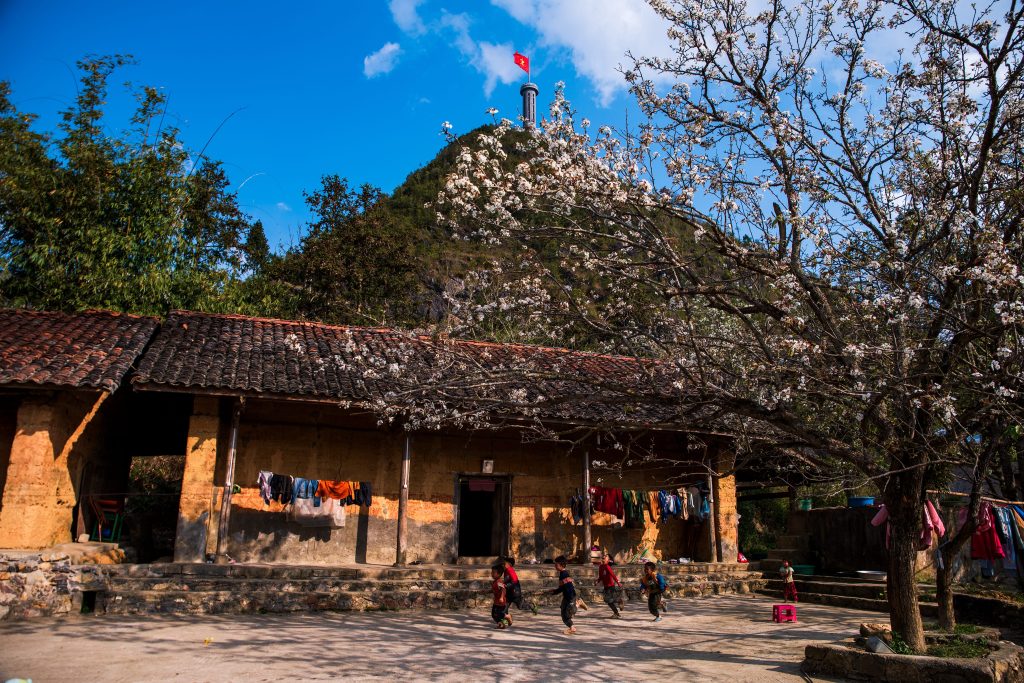
5.4 The H’mong King’s Palace – A heritage of highland architecture and culture
The H’mong King’s Palace, located in Sa Phin Valley about 14 km (8.7 miles) from Dong Van, is a historic estate built in 1919 by the Vuong family. Situated on the way to Dragon Mountain, this 64-room mansion blends H’mong and Chinese architecture, offering cultural insights into Ha Giang’s highland aristocracy and their lasting influence in the region.
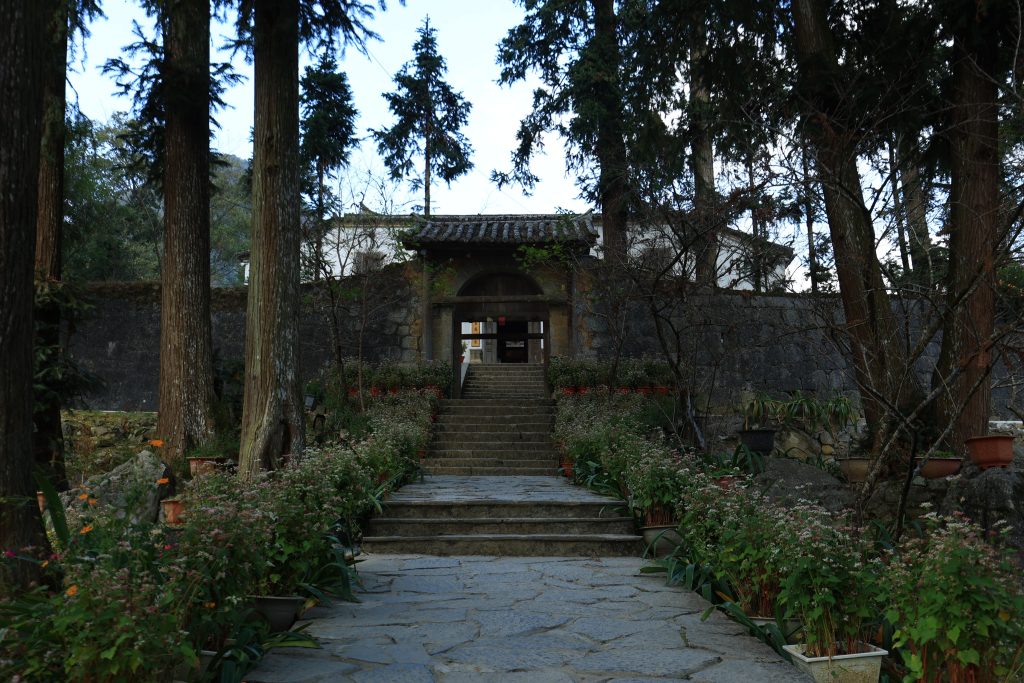
6. Essential travel tips for visiting Dragon Mountain-Dragon Eye
Visiting Dragon Mountain-Dragon Eye offers both natural beauty and cultural depth. To make the most of your journey, keep these practical tips in mind:
- Choose the right time of day: Visit early in the morning or late afternoon for cooler air and softer lighting over the Dragon Eyes and the Dong Van Plateau.
- Check the weather forecast: At high altitude, fog can roll in quickly. Clear skies offer the best panoramic views from the top.
- Bring essentials: Carry water, a windbreaker and a small snack. Services near the mountain are minimal, especially outside festival periods.
- Respect local culture: Lo Lo Chai Village lies just below the summit. Greet locals with a smile, avoid loud behavior and always ask before taking photos.
- Wear proper hiking shoes: The climb to the summit involves 839 stone steps. Sturdy shoes provide stability, especially in misty or damp weather.
7. Discover the magic of Dragon Mountain-Dragon Eye with Phieu Travel
Planning a visit to Dragon Mountain-Dragon Eye often comes with challenges: remote locations, twisting mountain roads, and fast-changing weather. Phieu Travel makes the journey easy, safe and deeply rewarding by turning every detail into a personalized experience guided by local insight and practical support – all seamlessly integrated into your Ha Giang Loop adventure.
Why travelers choose Phieu Travel for this journey:
- Efficient transfers: We arrange direct sleeper buses or limousines from Hanoi to Ha Giang, with easy connections to Lung Cu.
- Local guide expertise: Our team knows the Ha Giang Loop like the back of their hand, ensuring efficient routes and real-time navigation support.
- Adaptive itinerary planning: We track weather updates and adjust schedules so you can enjoy clear views of the Dragon Eyes and Dong Van Plateau.
- Responsive support: From itinerary setup to on-the-road coordination, we help you stay informed and prepared.
- Cultural experiences: Visit the H’mong King’s Palace, explore Lo Lo Chai Village and discover stories that bring the land’s history to life.
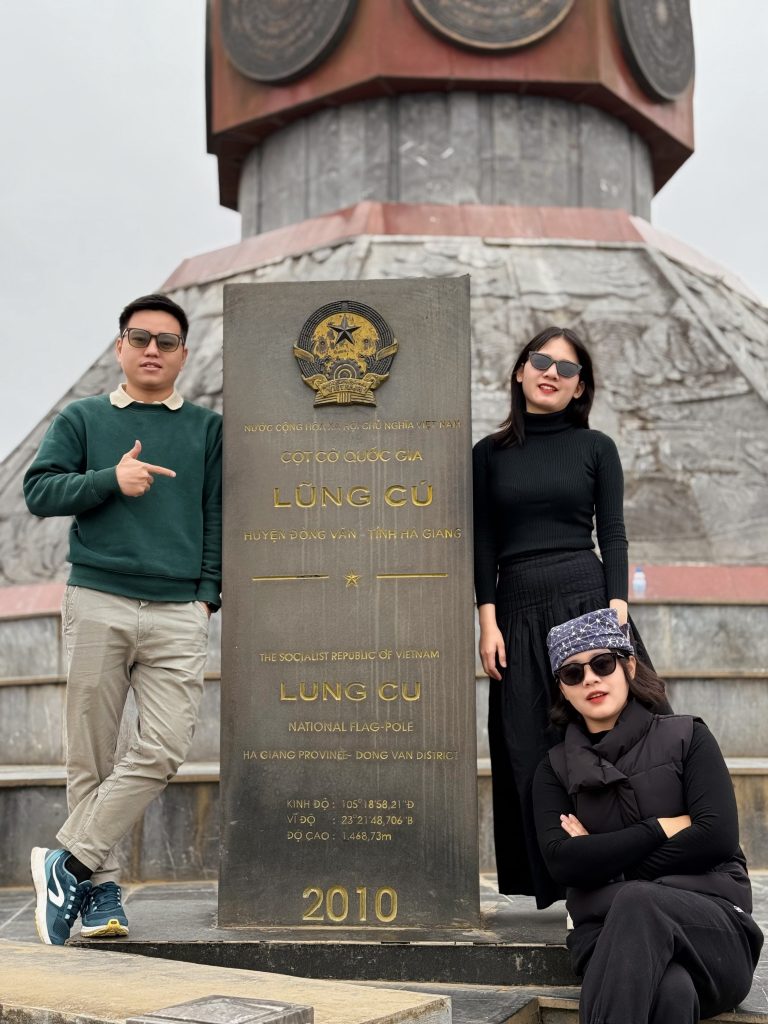
Dragon Mountain-Dragon Eye offer more than just views. They open a path into Ha Giang’s cultural roots, where nature, myth and highland life come together. With Phieutravel.com, your trip is not only well-planned but also filled with meaning, guided by people who know the land by heart.
You Might Also Like:
- 3 Days 2 Nights Ha Giang Loop tour package from Phieu Travel
- Dong Van Old Quarter Travel Guide: What to Eat, Do, and Where to Stay
- Lo Lo Chai Village, A Promised Land in the Heart of the Majestic Ha Giang Highlands


